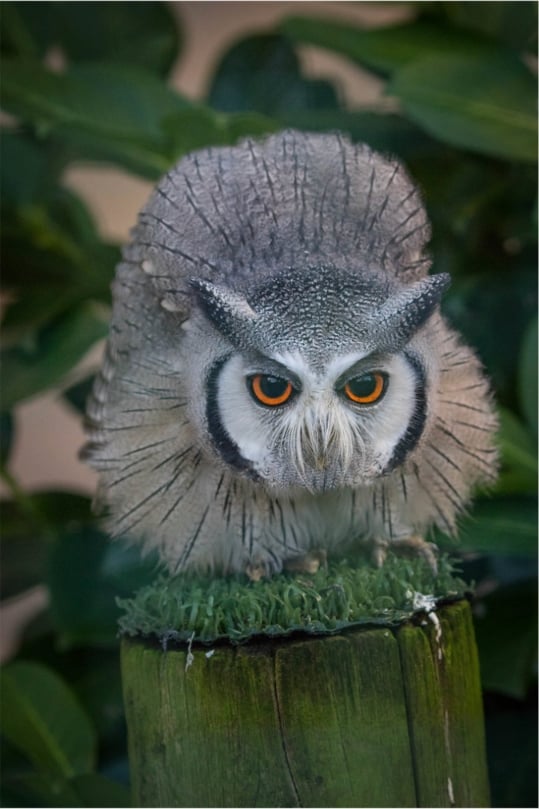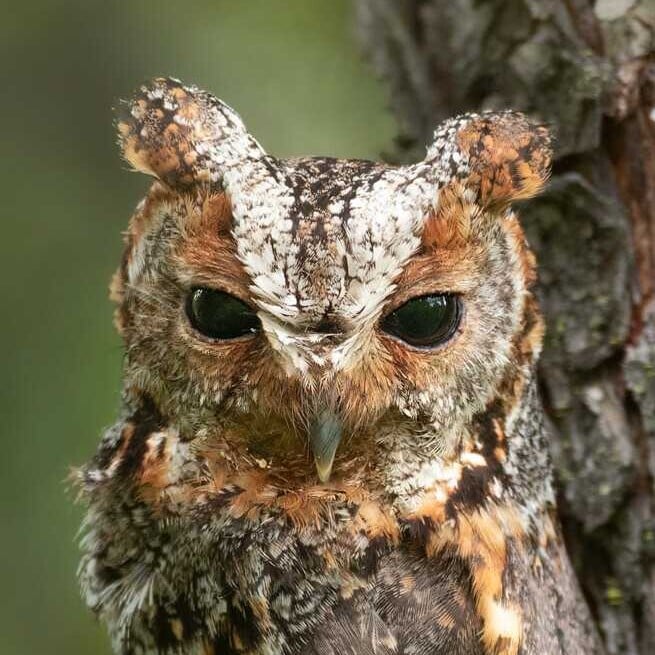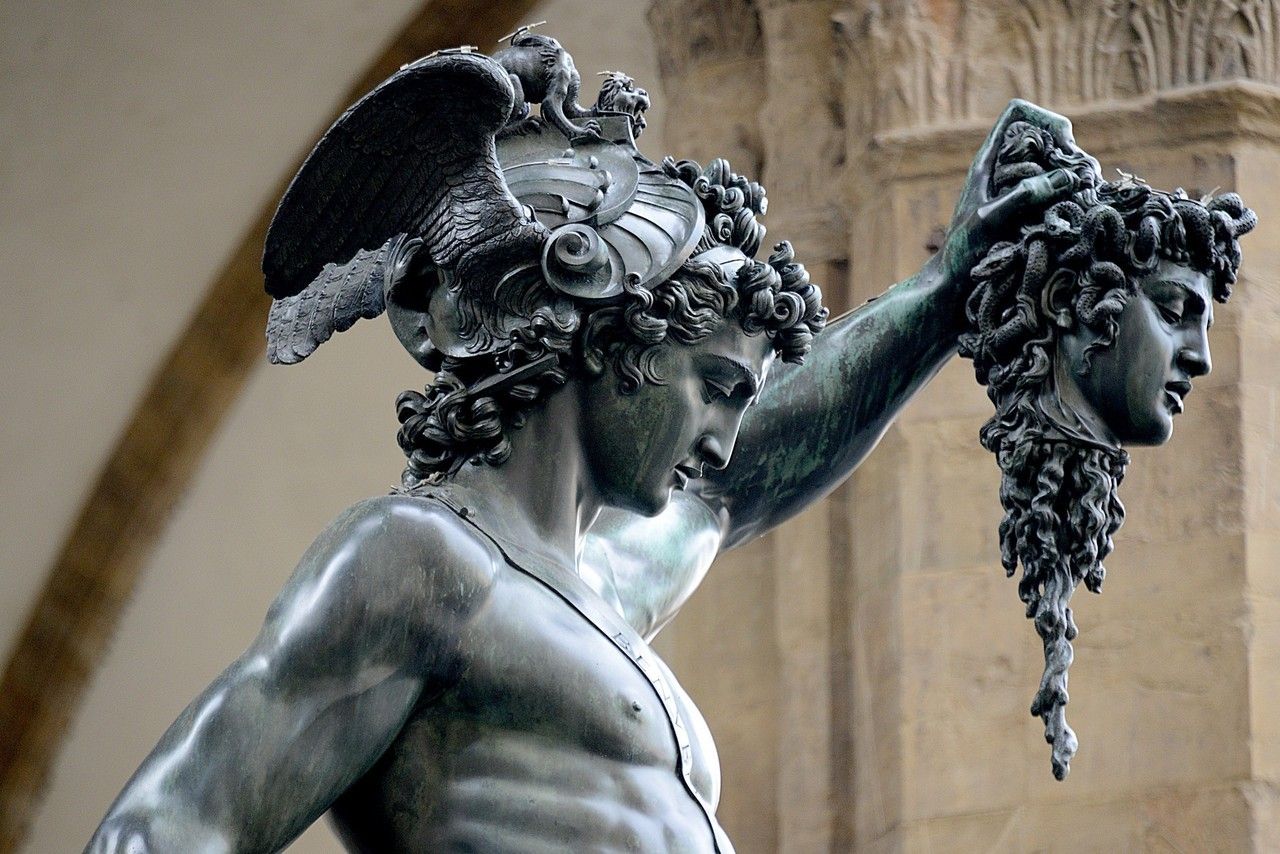Four of us were lucky to spend 45 minutes on an October morning with a Northern saw-whet owl along the high Cascade crest. Conifer trees behind it made a muted blue background. Soon after its photo was taken, the owl swooped down with frost flying off its head - like it was flying in stars…
Found on flickr
I love those little guys and their big googly eyes. 😍
I liked his description of the frost poof, and saw he does have photos of that too!

I have never seen this before in one of my photos – frost flying from a birds head as it leapt into a dive. At first I thought the white stars above its head were an artifact of dust on my lens, but when I looked at other photos before and after I saw none – but I did see frost on its head beforehand. So lucky.
Thans for the post!
That is a lovely photo!
I’ve been whizzing through suitable images to post and hadn’t seen that one yet…So jealous of the action shot 👍
He’s got one that’s less cropped than this one too, I just went with this one to see that big silly face better. 😜
There are so many good photographers out there! I just want to be able to see some wild owls in person.
I’ve managed to see a resting Tawney perched on a building, who was quite happy to remain stationary while I shone a torch at it…usually it’s a blink and I miss it as they fly past.
I have had a Barn Owl appear in front of me like a ghost, just as I shit my pants.
Having a dog helps, I’ve seen all sorts of critters whilst going out for an evening pee and a poop (the dog, not me)
I only ever got to see a Barn Owl on our fence about 30 years ago.
Where I live now, we have the Great Horned Owls I hear, and I love their hooting, but they keep away all the other owls, so it greatly reduces my odds of actually seeing one.
I do miss my late night dog walks. I used to like watching the bats do figure-8s swooping up all the bugs.
I used to have Great Horned Owls by me (in the suburbs!). I would hear them in the evening and early morning, but I haven’t for the past couple years. Apparently, they nest early, like February? Maybe I’ll hear some this year or the raspberry pi will pick them up.
or the raspberry pi will pick them up
Seriously??? How does this work?
I dont know if this is what they have, but BirdNET-Pi is the first thing that comes to mind.
Classify birds acoustically with BirdNET-Pi
Cornell also has it in app form if you want to play with it on a phone/tablet.
I haven’t tried it at all, so I’m curious how well it works as well!
You can set up a raspberry pi and microphone to listen for and identify birds in your yard. Here is a website that explains how to do it: https://becausebirds.com/fun-raspberry-pi-project-identify-backyard-birds-24-7/
I’ve stressed that before when city people say they’ll never see an owl, owls are everywhere people are, because that’s where the rodents are, and where there’s tasty rodents they’ll be hungry owls to welcome them!
Some owls are deeeeeep woods creatures, but many have evolved to live better nearby to people. As I said, the rodents gather around all our food, and our clearing trees and maintaining fields and orchards give them nice places to sit up high, yet monitor a nice clear open area to fly. Little Owls are big fans of us humans, and I know I’ve posted some Australian studies about how Powerful Owls are adapting as cities and towns expand into their hunting areas.
Nesting depends on many conditions, since GHO are found over a wide range of ecosystems. From Wikipedia:
The stage at which eggs are laid is variable across North America. In Southern Florida, eggs may be laid as early as late November to as late as early January. In the southeast, from south Texas to Georgia, egg laying may begin from late December to early February. From Southern California to northern Louisiana, egg laying is from early February to late March. The largest swath of egg-laying owls from central California to South Carolina to as far north as Ohio and Massachusetts is from late February to early April. In the Rocky Mountains, Northwestern United States, northern New England and eastern Canada, egg laying is from early March to late April. In the rest of Canada and Alaska, egg laying may be from late March to early May. The latest known date of egg laying was in mid-June in Saskatchewan and the Yukon Territory. In northwestern Utah and north-central Alberta, egg-laying can be 3–4 weeks earlier than usual when food is abundant and weather is favorable.
While urban and rural populations show little difference in productivity, there are differences in nest selection. Rural owls use old raptor nests more frequently than urban birds, who utilize crow or squirrel nests. Additionally, urban nesting individuals utilize trees that are taller/wider in diameter and nest much higher compared to rural nesting Great Horned Owls. The reason behind this increased tree height is due to the fact that urban areas have large trees used for ornamentation, shade and shelter. The higher nesting within the taller trees was attributed to human avoidance. Both rural and urban nesting sites were often within range of paved roads, likely a result of the great horned owl’s tendency to hunt along roadways.
Studies have shown that nesting in urban areas can influence adult great horned owls to lay eggs earlier than those who nest in rural areas. In Wisconsin, eggs in urban nests hatched a month earlier (January rather than February) than their counterparts in rural areas, probably due to increased protection from wind and cold. Nesting owls at sites in Winnipeg, Manitoba began nesting five to six weeks earlier than those in rural parts of Manitoba, presumably due to experiencing an extremely warm winter by Winnipeg’s standards, as well as benefitting from the local urban heat island.
There are a lot of tall oaks and squirrels in my yard. I’ve see hawks too!
These are great photos! I love Saw-Whets. 🥰
I like this photo




